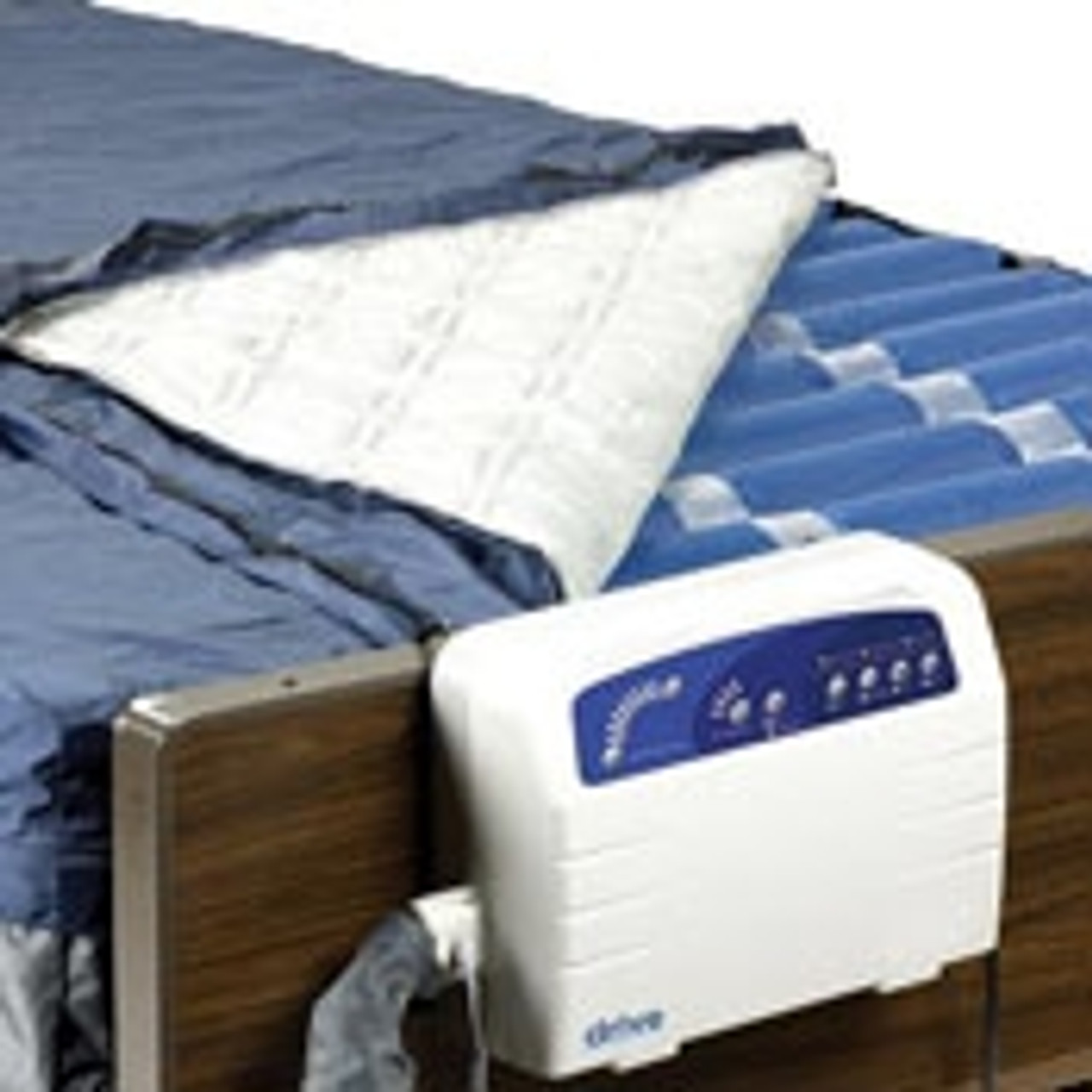Bariatric models of Alternating Pressure and Low Air Loss Mattresses are used in pressure prevention when heavier patients weighing 450 lbs. to 1,000 lbs. are at risk of developing pressure ulcers or pressure sores, also commonly referred to as “bed sores.” These specialty models come in widths from 36-inches to 60-inches in width in order to provide ample room, are designed with durability, and feature compressors or blowers with 12 LPM (liters per minute) or more of air flow to accommodate heavier weights....
Click the Read More button below to Continue Reading, or scroll down to Shop Bariatric Alternating Pressure Mattresses
What are Pressure Ulcers? Pressure ulcers are injuries to the skin and underlying tissue caused by prolonged pressure and shear over the skin. Bed sores can develop anywhere on the skin, but most often bony areas of the body, such as the heels, ankles, hips, tailbone, back of head, back and shoulder blades.
Who is at risk for developing bedsores or pressure ulcers? Patients at risk for bedsores are those who may be confined to a bed for an extended period of time, use a wheelchair, have moist skin from fever or perspiration, those who may suffer from skin breakdown due to dehydration or renal failure, and those who suffer from incontinence or decreased nutritional intake. People who may be immobile or have limited ability to move are especially susceptible to developing pressure ulcers.
What is Alternating Pressure? Alternating pressure is a feature that provides pressure redistribution by filling and un-filling air cells within the mattress so that contact points with the body are reduced. The changes in air pressure are modest—every other air cell deflating slightly—but enough to relieve pressure points on the user. Entry level mattresses have preprogrammed treatment times or “cycle” times, generally every 10 minutes. While more advanced mattresses systems feature compressor or blower units that allow you to select treatment time options of 5, 10, 15 or 20 minute cycles. At the completion of the selected or pre-programmed treatment time, the deflated cells will refill to the original firmness (set by the user or caregiver), while every-other-cell from that point deflates slightly.
What is Low Air Loss? Reducing heat and moisture is an important component of any pressure ulcer prevention program. Low air loss is a feature that provides a flow of around the surface of the mattress to assist in managing the heat and humidity of the skin. Tiny laser micro air holes in the top surface of the mattress blow out air which reduces skin interface pressure and wicks away moisture. This keeps the skin dry and helps with the treatment and prevention of pressure ulcers. There are two types of Low Air Loss Mattresses: On-Demand Low Air Loss, and True Low Air Loss. Mattresses with On-Demand Low Air Loss have a Low Air Loss Mode that can be manually turned off and on. In comparison, a True Low Air Mattress runs the feature continuously.
What is Lateral Rotation? Users who are unable to move themselves or shift position on their own are susceptible to pressure ulcers, and a turn schedule program has likely been prescribed by a physician. Alternating Pressure Mattresses with Lateral Rotation include a feature that actually rotates the user. This can be extremely helpful to users and caregivers, as options from 1/4, 1/2, 3/4 and full turns can be scheduled in 10, 20, 30 and 60 minute intervals. Turn direction, right or left, can also be programed on many lateral rotation mattress models.
What is Bottoming Out? Generally, when an adjustable bed is inclined at the head or foot, the force of gravity naturally shifts the user’s weight to the center of the bed. To prevent the user's midsection from bottoming out”—being so heavy that it overwhelms the mattress to the point that their bottom rests on the bed deck—alternating pressure systems will sense when the mattress is in an inclined position and force needed air to the middle of the mattress. Mattress models vary, but 10- to 15-degrees of incline is generally the threshold at which the bottoming out prevention mode is triggered. Inclining mattresses beyond this point is perfectly fine for the system. But it is important to note that while in this bottoming out prevention mode, the alternating pressure function will be automatically put in standby as the mattress enters “Static mode to redirect the needed air. How often a user rests in an inclined position, the amount of incline and duration will depend on the pressure prevention program developed by your medical professional team.
What is an Alternating Pressure Mattress Overlay? Mattress overlays work well for people who have difficulty turning at night but are not at high risk of developing pressure ulcers. They are widely used by patients who spend less time in bed but may need some form of additional pressure relief while they are sleeping.

